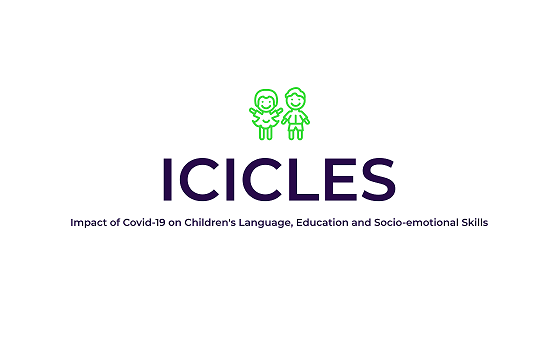Schools help migrant pupils to achieve despite funding cuts
The ONS has recently published its analysis of international migration and the education sector, looking at demand for school places, pupil attainment and staff. Its report makes explicit reference to high levels of public interest in the ‘impact and contribution’ of migration on the sector.

The ONS has recently published its analysis of international migration and the education sector, looking at demand for school places, pupil attainment and staff. Its report makes explicit reference to high levels of public interest in the ‘impact and contribution’ of migration on the sector. Pressure on school places is a regular theme of news features, for example this piece in the Daily Express from May 2018:
The impact of migration on the education sector has long been exaggerated, as NIESR’s report to the Migration Advisory Committee back in 2011 explained. ONS’s trawl of the data provides much needed proof of this. Its key findings are that children born in the UK, not recent migrants, have fuelled the demand for school places, that only 7% of primary and 10% of secondary schools in England were born outside the UK; and that pupils with English as an Additional Language (EAL) who include migrants and UK born pupils, have slightly lower attainment than mother-tongue speakers at 7 years old, but that this difference disappears by age 16. Their analysis also finds that, using measures of progress, EAL pupils who took their GCSEs in 2018 made much better progress since they were 11 than pupils with English as a first language.
These achievements by EAL pupils and their schools are all the more impressive given the limited funding and support for schools, levels which have declined since the withdrawal of the Ethnic Minority Achievement Grant (EMAG) which ring-fenced funds for EAL support. Funding has now been absorbed into general school funding and around half of Local Authorities have no central EAL spending. A report by the Bell Foundation states that the achievements presented in the ONS report reflects earlier support which has since declined as a result of funding cuts.
Schools are struggling to provide EAL pupils with the support they need
Our recent research found teachers were very positive about the contribution that migrant pupils and their families make to the life of their schools. This includes the motivation and attitude of many migrant pupils and their families and the enrichment through exposure of pupils and staff to different languages and cultures. But we found schools struggling to find resources to support EAL pupils, particularly new migrants with little or no English who need intensive help to participate in lessons.
Migrant pupils are a group with very diverse needs. Our research found that schools face special challenges where pupils are new to English, have missed out on schooling through living in a conflict zone, disability, special needs or mobility. Schools also find it hard to meet the needs of young people who arrive in year 10 or 11 who will struggle to gain GCSEs and progress to post-16 academic or vocational study.
A churn for the worse
The ONS data shows that, although almost 1 in 5 pupils have English as an additional language, the overall proportion of pupils needing significant language support to learn subjects is much lower, at around 1 in 30. However, there is a clustering effect, with some schools having high proportions of EAL pupils. Two of the 15 primary schools in our study – in Middlesbrough and in Wolverhampton – have more than 80% of pupils with EAL. Schools with high proportion of migrants also commonly experience churn since migrants often have little choice of school but move as their circumstances change or become aware of their options. Schools which experience high rates of churn are often lower performing, in disadvantaged areas and face the most challenges.
What do schools need to support migrant pupils?
Our research found that lack of bespoke funding restricts the support schools can give migrant pupils. They are not able to hire enough specialist EAL teachers or support staff, or to supply equipment, for example to translate in lessons. A specific stream of funding for migrant pupils with EAL needs is needed to ensure that schools are adequately resourced to provide tailored support inside and outside the classroom. This can help ensure that migrant pupils can reach their potential quickly and require less support in the longer term.
Parents play a key role in a child’s academic performance and schools actively seek to engage migrant parents in all aspects of school life. Migrant parents are often unfamiliar with school life in the UK and schools need to communicate with parents who may have limited English. Schools also want to involve parents in the life of the school and their children’s learning. Again, this work is under-resourced and where translation and interpreting are needed, some schools incur much higher costs than others. Schools could also play a much bigger role in improving English among migrant communities if they were funded to do so.
It is desirable, for many reasons, for schools to have a diverse teaching and support staff, including from pupils’ mother countries. The ONS data show that 12% of school staff in England were born outside the UK, but they are unevenly distributed across England. They also can’t make up for the lack of training to equip teachers with the skills to teach migrant pupils. These skills include managing classes with a range of levels of English and prior attainment, collaborating with language support staff and ensuring that migrant and non-migrant pupils develop good relationships. This needs to be part of initial teacher training and on-going professional development.
So while the ONS report helpfully addresses some misconceptions about the impact and contribution of international migration on schools, it should be acknowledged that schools, parents and migrant children themselves have achieved success against a background of limited funding. Think how much more could be achieved for pupils of all backgrounds if support in and out of the classroom was well resourced.














